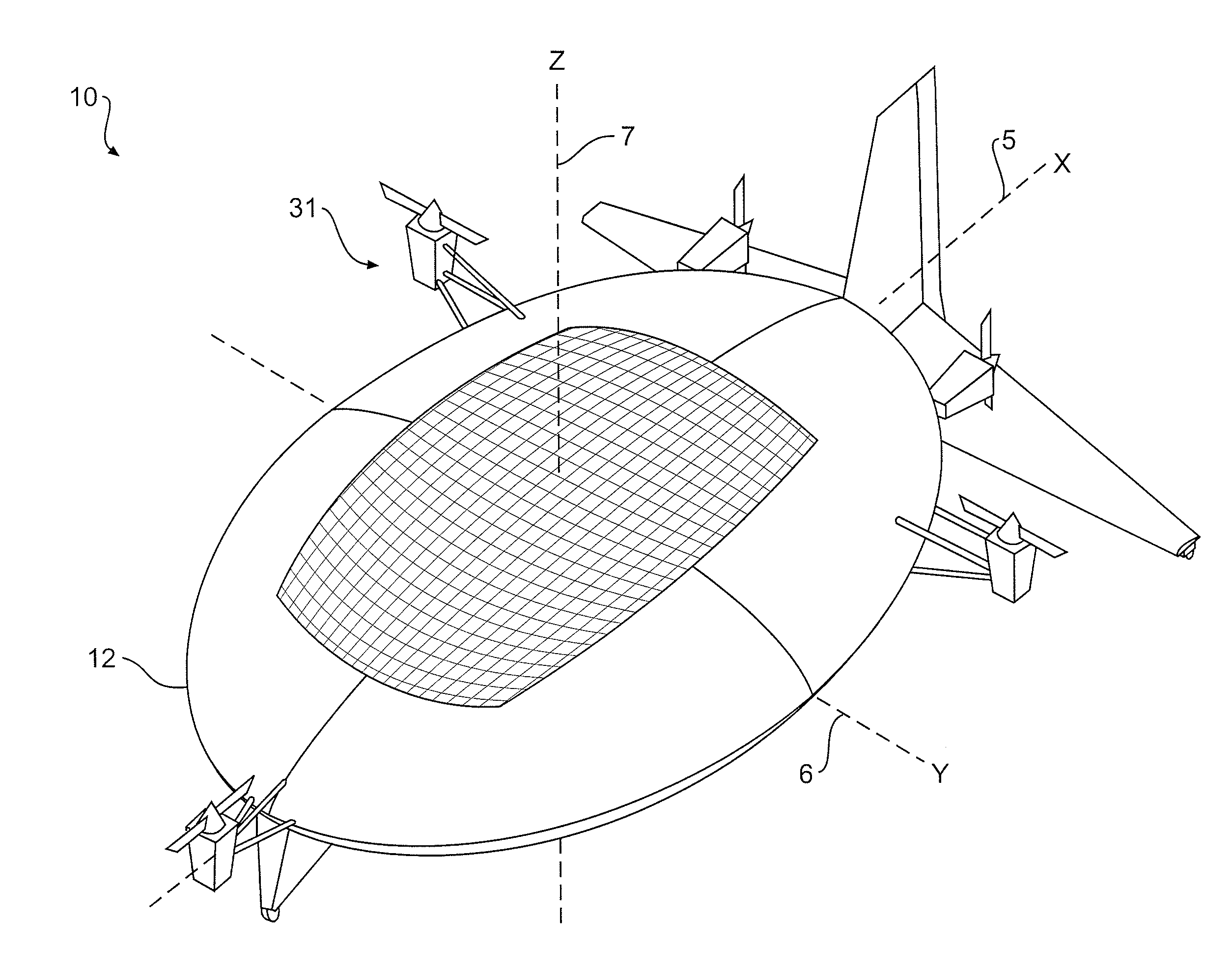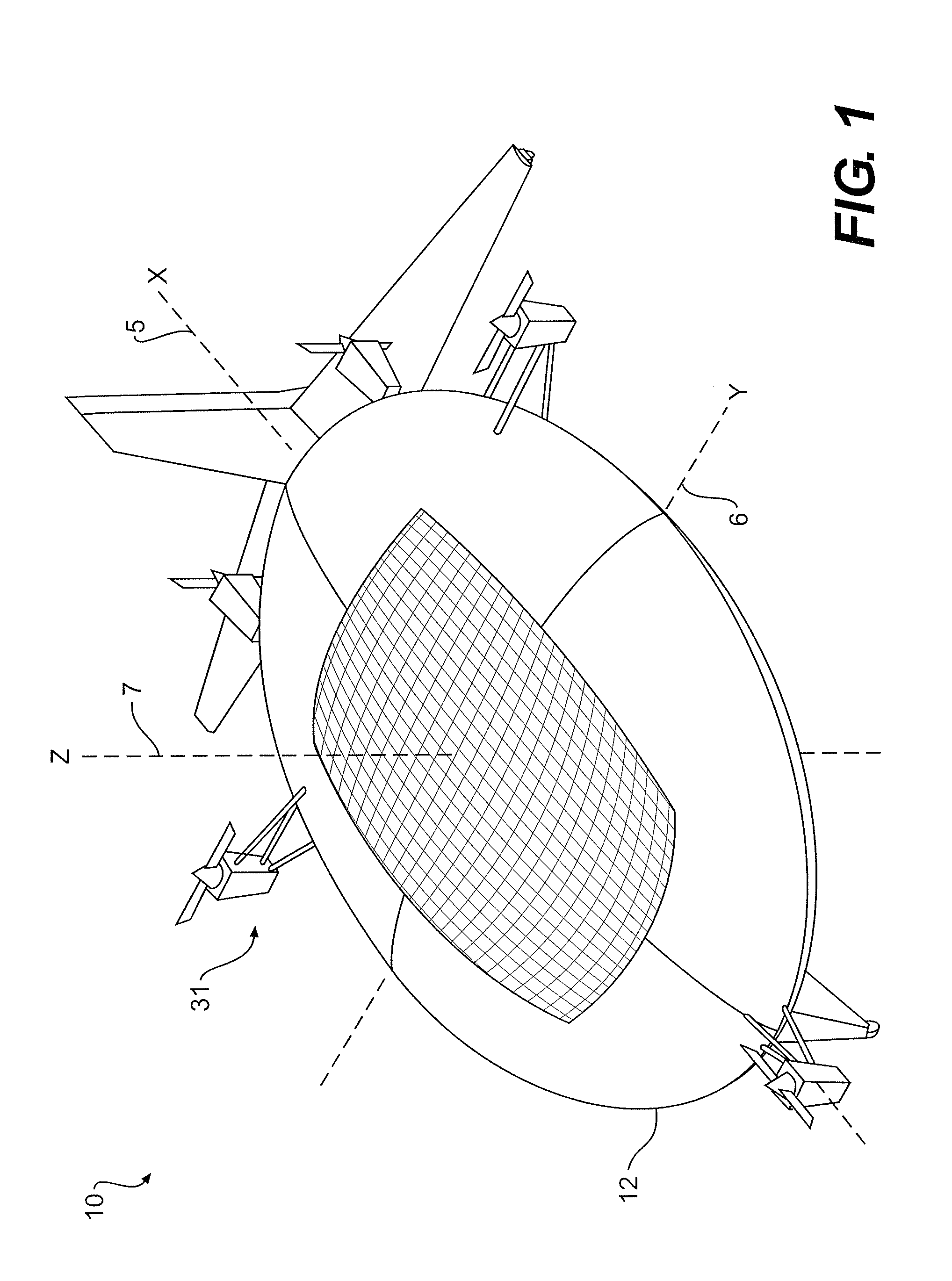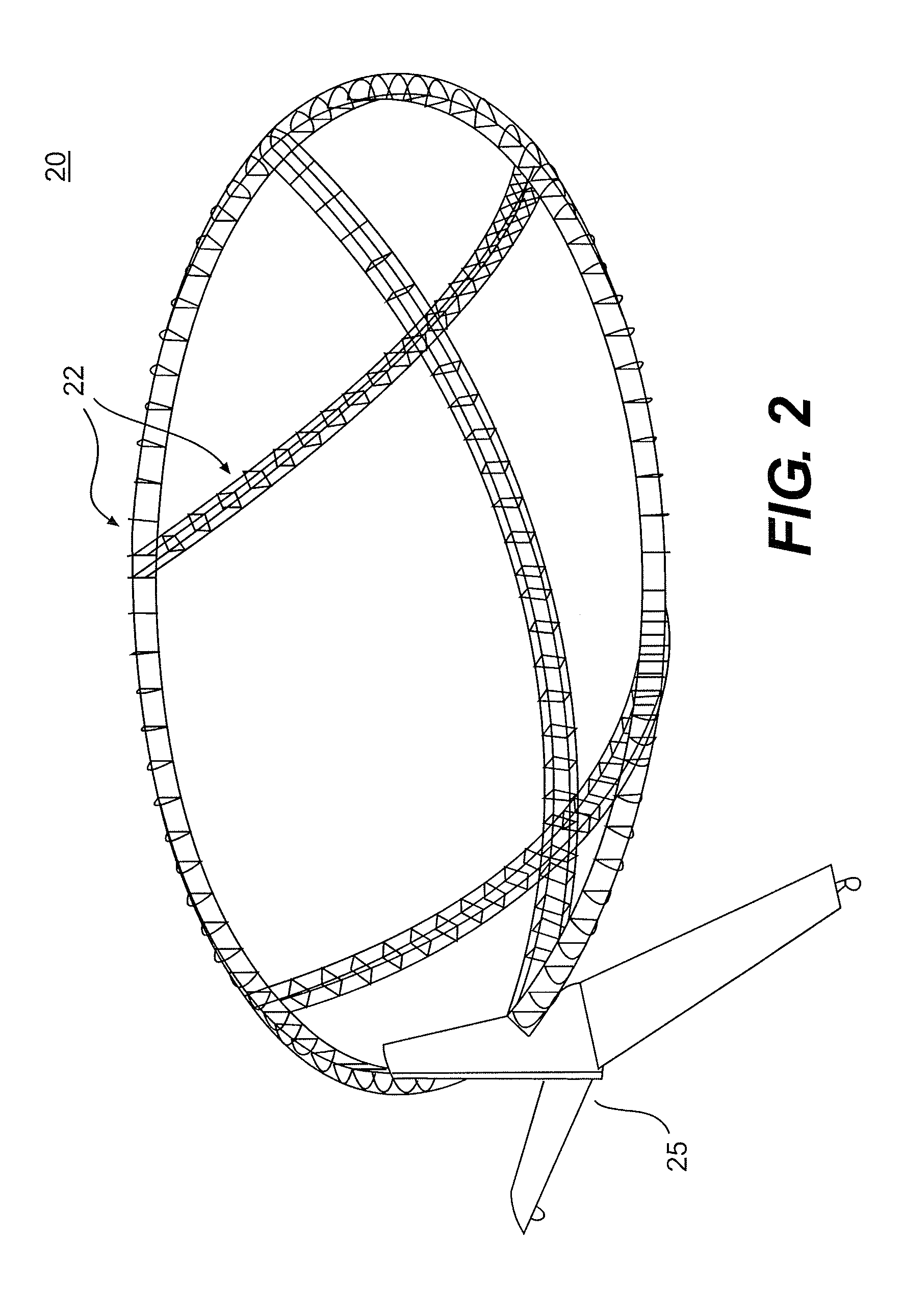System and method for solar-powered airship
a solar energy and airship technology, applied in aircrafts, lighter-than-air aircraft, transportation and packaging, etc., can solve the problems of airships to adverse aeronautic effects, airships to experience adverse effects based on aerodynamic forces, and airships streamlined in particular, to achieve the effect of reducing the risk of collision and reducing the safety of passengers
- Summary
- Abstract
- Description
- Claims
- Application Information
AI Technical Summary
Benefits of technology
Problems solved by technology
Method used
Image
Examples
Embodiment Construction
[0054]Reference will now be made in detail to the drawings. Wherever possible, the same reference numbers will be used throughout the drawings to refer to the same or like parts.
[0055]The accompanying figures depict exemplary embodiments of a solar-powered airship 10. Airship 10 may be configured for VTOL as well as navigation in three dimensions (e.g., X, Y, and Z planes). As shown in FIG. 1, for example, airship 10 may include a hull 12 configured to contain a gas. Airship 10 may also include at least one propulsion assembly 31 coupled to airship 10, a power supply system for delivering power to propulsion assembly 31 (further detailed in FIG. 12), and a cargo system 1100 for carrying passengers and / or freight (see, e.g., FIGS. 13A-13E).
[0056]Throughout this discussion of various embodiments, the terms “front” and / or “fore” will be used to refer to areas within a section of airship 10 closest to forward travel, and the term “rear” and / or “aft” will be used to refer to areas within...
PUM
 Login to View More
Login to View More Abstract
Description
Claims
Application Information
 Login to View More
Login to View More - R&D
- Intellectual Property
- Life Sciences
- Materials
- Tech Scout
- Unparalleled Data Quality
- Higher Quality Content
- 60% Fewer Hallucinations
Browse by: Latest US Patents, China's latest patents, Technical Efficacy Thesaurus, Application Domain, Technology Topic, Popular Technical Reports.
© 2025 PatSnap. All rights reserved.Legal|Privacy policy|Modern Slavery Act Transparency Statement|Sitemap|About US| Contact US: help@patsnap.com



